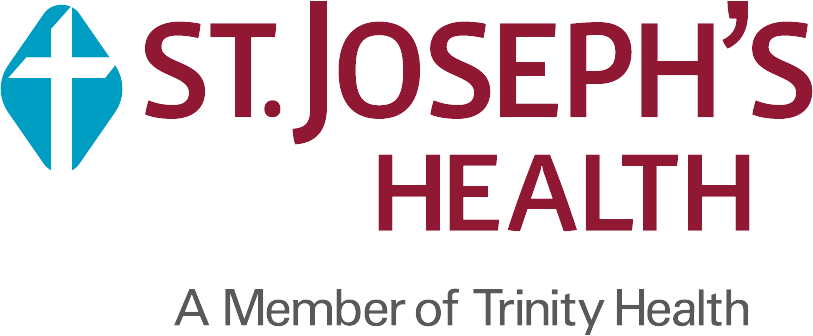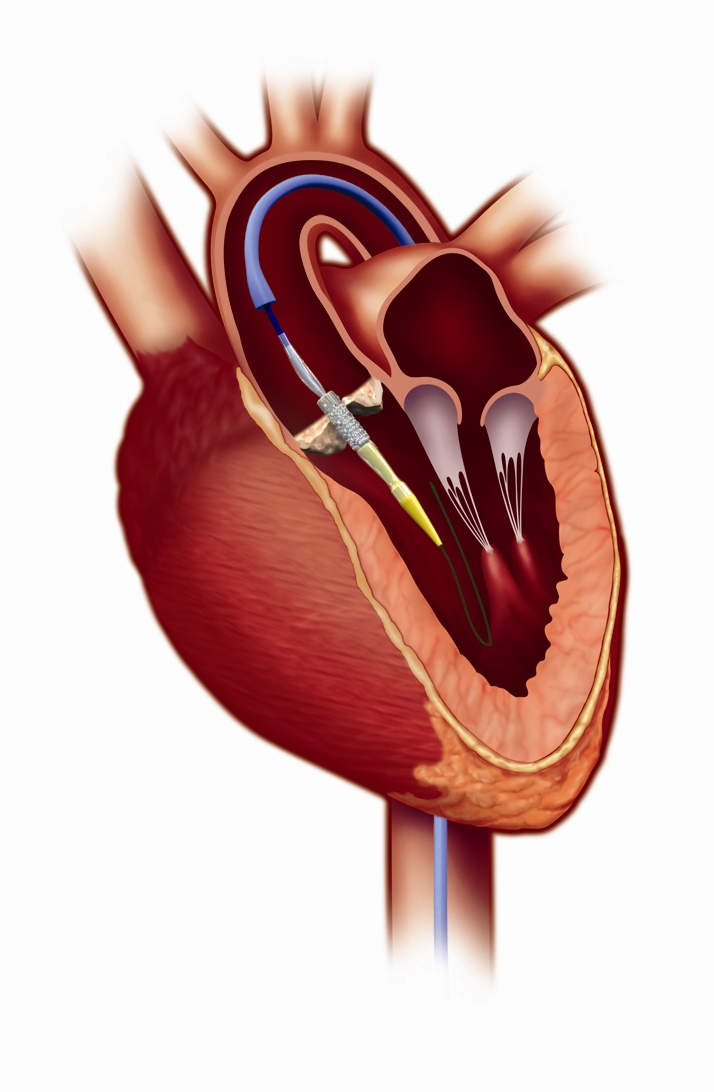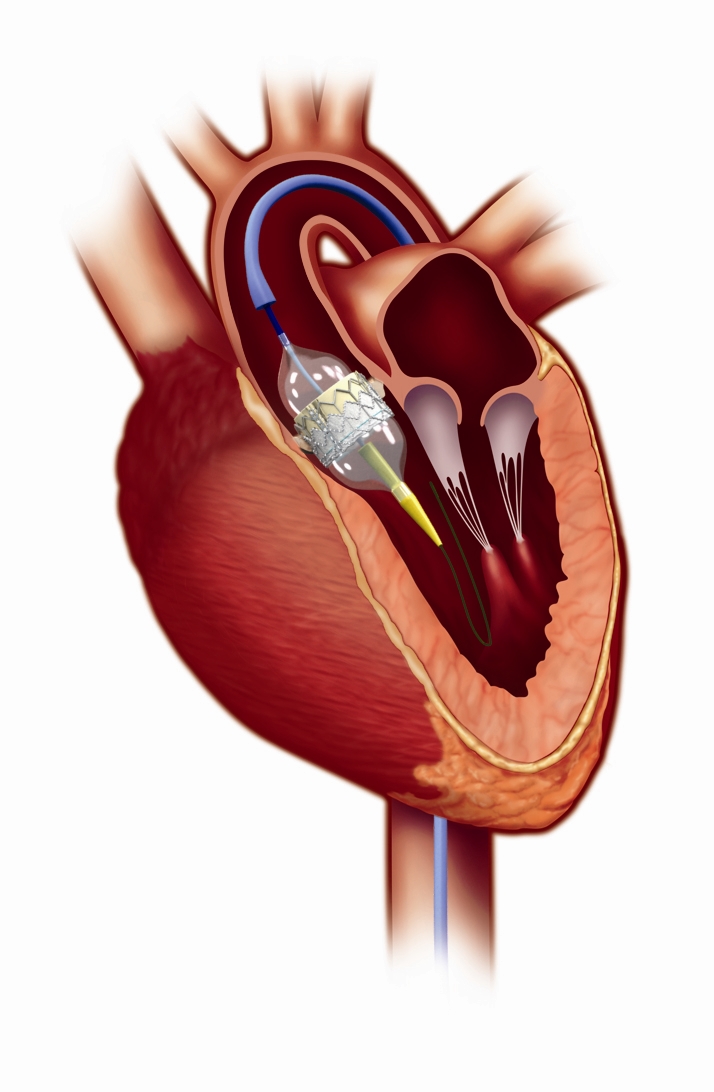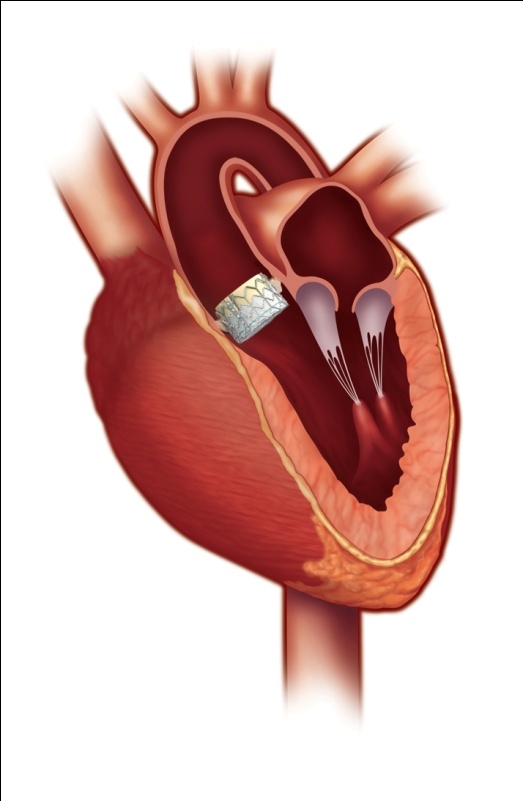Transcatheter Aortic Valve Replacement (TAVR) Program
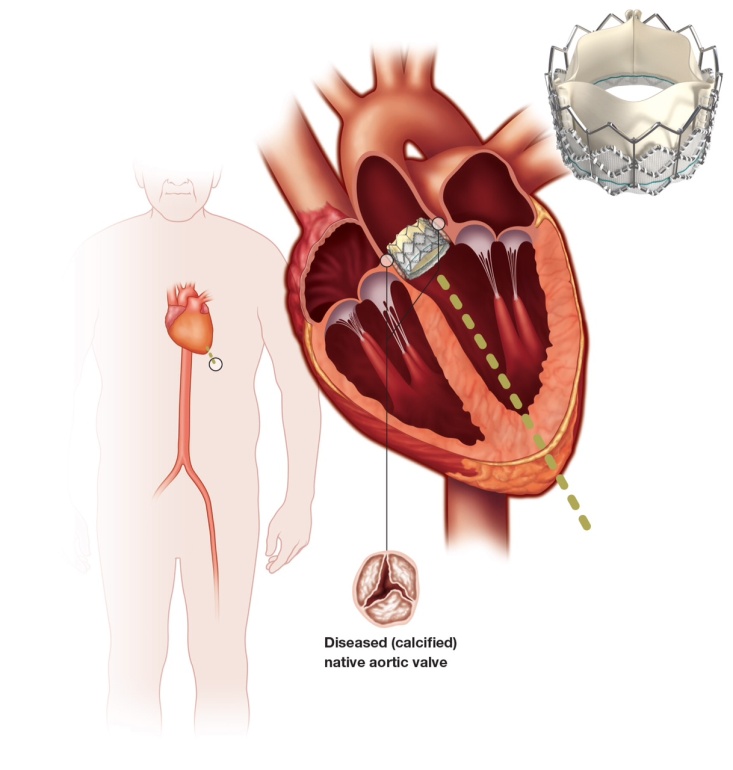 For years, inoperable and high ristk patients with severe symptomatic aortic valve disease have had no treatment options – until now. St. Joseph’s is the first and only Central New York hospital to provide the new Transcatheter Aortic Valve Replacement (TAVR) procedure, also known as TAVR, a less invasive alternative to open heart valve replacement surgery.
For years, inoperable and high ristk patients with severe symptomatic aortic valve disease have had no treatment options – until now. St. Joseph’s is the first and only Central New York hospital to provide the new Transcatheter Aortic Valve Replacement (TAVR) procedure, also known as TAVR, a less invasive alternative to open heart valve replacement surgery.
Those with aortic valve stenosis – when the aortic valve tightens or narrows, preventing blood from flowing through normally – affects tens of thousands of Americans each year, mostly women. Patients who have aortic valve stenosis may feel chest pain or tightness, shortness of breath and have difficulty exerting themselves, particularly when exercising. Sometimes, they don’t have any symptoms and the stenosis can go undetected. If not treated, severe aortic stenosis can lead to heart failure and/or sudden death. Without treatment, it is likely that 50 percent of patients with aortic valve stenosis will not survive more than an average of two years after the onset of symptoms.
Up until now, the only treatment for this disease has been open heart aortic valve replacement surgery, but TAVR offers new hope for patients with this condition who are unable to have surgery due to sickness, weakness or being too high risk for an open heart procedure.
The less invasive procedure is done by squeezing the valve onto a balloon and inserting it with a catheter, which is sent to the heart for implantation. This insertion is typically done through the groin, however, if the patient does not have suitable access through their leg artery, TAVR can also be inserted via an incision between the ribs and through the bottom end of the heart called the apex. Once the valve is in the right place, the balloon is inflated and the valve precisely positioned. The TAVR procedure is designed to replace the patient’s diseased valve while the heart continues to beat – eliminating the need for cardiopulmonary bypass (the use of a heart-lung machine).
The benefits of TAVR include a shorter procedure, less pain and shorter hospital stay. Recovery time is roughly half that of open heart surgery.
St. Joseph’s is now accepting referrals for the TAVR procedure. For more information, call the Resource Line at 1-888-STJOES1 or fill out the referral form.
FAQ
How may TAVR procedures have been performed?
To date, more than 45,000 patients have been implanted with the TAVR procedure by multi-disciplinary heart teams worldwide.
When was TAVR approved?
In November, 2011, the U.S. Food and Drug Administration (FDA) approved the SAPIEN Transcatheter Heart Valve for the treatment of patients with severe native aortic valve stenosis who have been determined by a cardiac surgeon to be inoperable for open aortic valve replacement, and in whom existing co-morbidities would not preclude the expected benefit from correction of the aortic stenosis.
The Centers for Medicare and Medicaid Services (CMS) approved it for coverage May 1, 2012.
In October 2012, the FDA approved an expanded indication to enable the treatment of high-risk patients. The FDA also approved a new delivery method called the transapical procedure for high-risk patients without suitable access through their leg artery. During this procedure, the valve is inserted via an incision between the ribs and through the bottom end of the heart called the apex.
Are there any research trials for TAVR?
Data from both the high risk and inoperable study groups in The PARTNER Trial were published in four separate manuscripts in The New England Journal of Medicine. The PARTNER Trial was the world’s first randomized controlled trial of TAVR, and importantly, cardiac surgeons and interventional cardiologists were brought together in a clinical trial to collaborate to evaluate and treat patients.
What are the risks with the TAVR procedure?
There are still risks associated with TAVR as there is with surgical aortic valve replacement. These should be taken into consideration when discussing this procedure with your cardiologist.
Our Heart Team
Core members of the heart team at every hospital selected to offer TAVR must participate in a rigorous training program. Before doctors are able to perform a procedure, they are required to receive training using a hands-on-simulator and must observe several cases performed by other certified doctors with TAVR experience. This rigorous process has been implemented and utilized to ensure the technology is utilized by skilled operators, so that optimal patient outcomes are achieved.
Cardiologists:
Ayman Iskander, MD, FSCAI, FAAC, FACC
Matthew O’Hern, MD
Cardiac Surgeons:
Zhandong Zhou, MD, PhD, FASC
Valve Clinic Coordinator:
Resources
For a fact sheet on the TAVR procedure, click here.
For more information on aortic stenosis, click here.
For a glossary of terms, click here.
